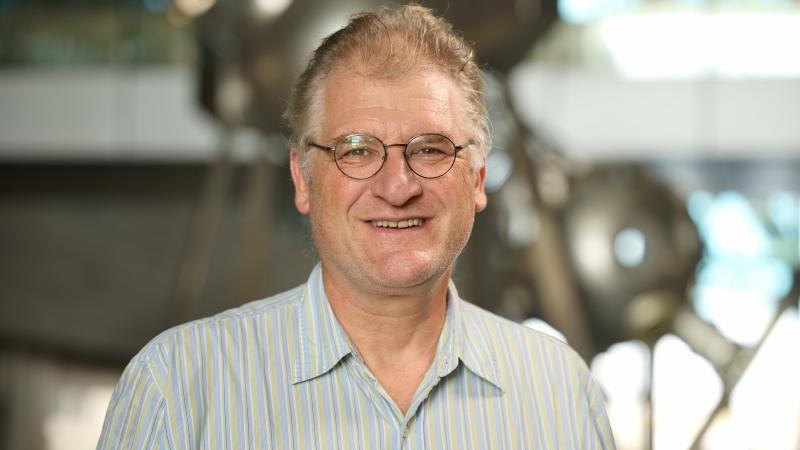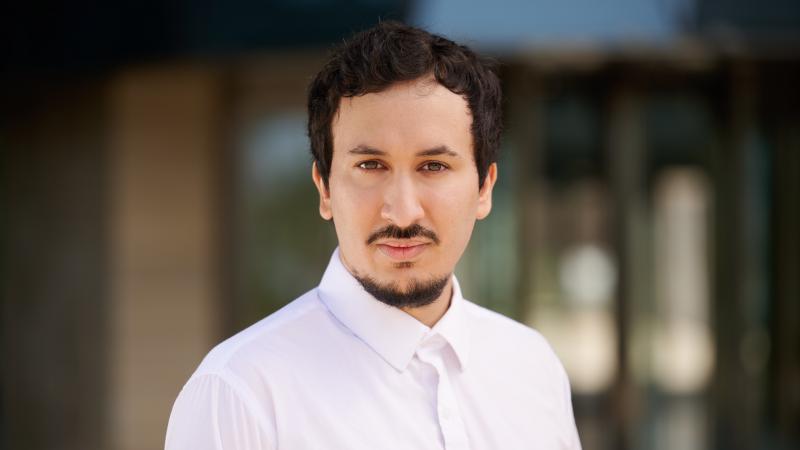-By Francesca Serra
On April 19, 2021, NASA flew the first helicopter in history on Mars. Ingenuity – the small, unmanned solar helicopter - rose 3 m over the ground and hovered in the thin Martian air for about 40 seconds.
Ingenuity landed on Mars attached to the underside of the Perseverance rover on February 18, 2021.
Before Ingenuity, the first flight on a planet beyond Earth was an unpowered balloon carried on Venus by the Soviet probe Vega 1, in 1985.
We asked Eric Feron, professor of electrical engineering and director of the Robotics, Intelligent Systems, and Control (RISC) Laboratory at the King Abdullah University of Science and Technology (KAUST), Saudi Arabia, and Ph.D. student Renzo Caballero to comment on the challenges posed by the Martian atmosphere, and future missions on extraterrestrial planets.
Q: What are the main challenges of flying on other planets?
Feron: In general, the challenge of flying on other planets is that the basic flying conditions are very different. For example: the density of the Martian atmosphere is only 1% of the atmosphere we experience on planet Earth. On the red planet, there are fewer molecules for the helicopter blades or the wings of an airplane to "hang on."
In general terms, the lower the density of a fluid, the harder it is to keep aloft or afloat: it is much easier to swim in dense, salty water than in thin freshwater.
The low gravity on Mars somewhat alleviates that hindrance: objects weigh 2/3 less on Mars than on Earth, therefore making it easier for them to lift themselves off the ground.
However, the real challenge is that nobody is currently on Mars to "tweak" the helicopter if something goes wrong. The software is the only part under control and can be tweaked from the Earth. If the hardware needs repair, it would be impossible to execute, and the mission would abort. To avoid this from happening, NASA scientists injected on this mission’s preparation an unbelievable amount of energy, studying and anticipating what could go wrong. This is, in general, the case for all space systems, but it was pushed to an extreme for Mars missions.
Olivier Toupet, one of my former students, is the lead integration engineer of the helicopter Ingenuity, which means that he leads the team in charge of putting Ingenuity together and monitoring the helicopter systems during its mission on Mars.
Olivier was my M.S. student at MIT during the early 2000s, and later we worked together in a startup named "Nascent Tech", based in Cambridge, Massachusetts, until 2005. The startup was manufacturing autonomous helicopters modeled after a very successful prototype that my group had developed at MIT, between 1998 and 2003.
I'm very proud of Olivier's success!
Q: How are those flying vehicles controlled?
Feron: Ingenuity is entirely autonomous. Once the flying command is initiated, nothing can be done by the NASA scientists because information takes several minutes to travel to and back from Mars. The primary control elements are the specially designed propellers and the electric motors that allow the helicopter to take off and move around. The two propellers sit atop each other; this is a coaxial rotor design, a very well-known design of proven efficiency.
The helicopter knows where it is thanks to a mix of accelerometers, gyroscopes, and cameras. The big difference with Earth is that GPS is unavailable on the red planet, and therefore the vision sensors become extremely important. Luckily, the technology is well advanced in this field today.
The computer that reads the sensors and sends commands to the propellers and electric motors must be sufficiently powerful to do some level of image analysis. But the main challenge is for the computer to handle Mars’s climate. And the batteries that power the computer and the motors are charged via solar panels.
Q: What is the primary purpose of flying drones on other planets? What kind of information are they looking for?
Feron: The current machine has no purpose other than demonstrating that flying on Mars was possible. It is, however, easy to think of possible missions: a flying machine can move much faster than a surface rover. So a flying machine can be the ideal companion of a rover to survey a given area and search for exciting artifacts, such as specific geological structures, signs of water, or even signs of life. In this regard, they are both complementary with the spacecraft that orbits Mars and observes the Martian surface from up above.
An interesting fact about "Exploring Mars" vs. "Exploring the Earth" is the order in which technologies will appear:
Earth: Walk / Horse / Automobile / Flight / Satellites
Mars: Satellites-Automobile/ Flight/... Walk sometime in the future. We won't see horses any soon there, I think.
Renzo Caballero is an Electrical Engineer with a specialization in microelectronic design and semiconductors physics. He obtained his Electrical Engineer degree from the Universidad de la Republica, Montevideo, Uruguay, in 2016, and his M.S. degree in Applied Mathematics and Computer Science at KAUST in 2019. He is currently a Ph.D. student of the RISC Lab, investigating robotics scenarios to colonize other planets.
Q: What is your project about?
Caballero: Humankind has always got an exploratory spirit, and Mars seems to be the next big step! However, robots will most likely be the first colonizers of Mars, long before humans can explore the planet and have a stable life there. The Martian robots will need to have peculiar characteristics such as being able to autonomously repair and replicate themselves, as well as harvesting energy from the any possible environments. To do so, they need an advanced Artificial Intelligence able to process external data and learn on the fly. We are talking about the next-generation of AI, and at the RISC Lab, we are investigating innovative solutions for tackling these challenges.
Q: What is the primary goal of your research?
Caballero: The main goal is to develop an entirely autonomous, self-repairing and self-replicating unit that utilizes as few external resources as possible. The tentative application is space colonization. These self-replicating units will be the initial seeds that colonize the planet or satellite, and create a self-sustainable colony for paving the way toward human colonization.
Q: Can you elaborate on the concept of "self-replicating robots"?
Caballero: General challenges include the design of robots, the correct process of external materials, and manufacturing technologies. Also, the self-replicating paradigm adds an extra layer of complexity regarding quality. When robots will start to duplicate themselves generation after generation, the most delicate and precise components most likely will not be copied to perfection, which will lead to an exponential degeneration of the initial design. This problem raises a question: how can a robot keep its quality when replicating without human control? It’s almost a philosophical question and my dream is to find the answer.
As if it was not enough, the universe is made of a wide range of extreme environments where pressure, atmosphere composition, gravity, temperature, radiation, and available resources can vary notably. Will we be able to design robots fit for any possible condition? Let me answer by paraphrasing Norman Vincent Peale’s quote: “Let’s aim at Mars. Even if we miss it, we will land among the stars.”

